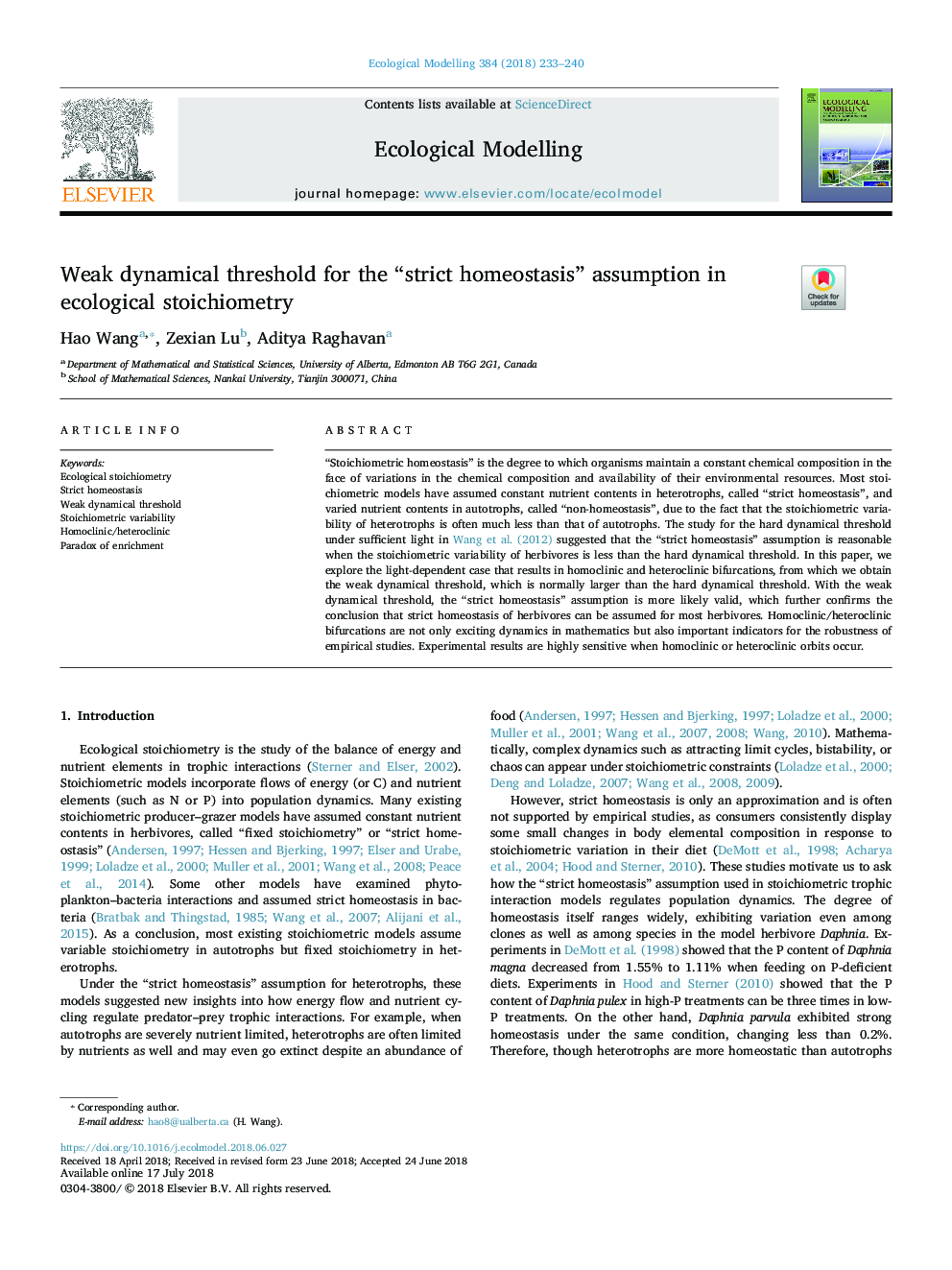| کد مقاله | کد نشریه | سال انتشار | مقاله انگلیسی | نسخه تمام متن |
|---|---|---|---|---|
| 8846004 | 1617363 | 2018 | 8 صفحه PDF | دانلود رایگان |
عنوان انگلیسی مقاله ISI
Weak dynamical threshold for the “strict homeostasis” assumption in ecological stoichiometry
دانلود مقاله + سفارش ترجمه
دانلود مقاله ISI انگلیسی
رایگان برای ایرانیان
کلمات کلیدی
موضوعات مرتبط
علوم زیستی و بیوفناوری
علوم کشاورزی و بیولوژیک
بوم شناسی، تکامل، رفتار و سامانه شناسی
پیش نمایش صفحه اول مقاله

چکیده انگلیسی
“Stoichiometric homeostasis” is the degree to which organisms maintain a constant chemical composition in the face of variations in the chemical composition and availability of their environmental resources. Most stoichiometric models have assumed constant nutrient contents in heterotrophs, called “strict homeostasis”, and varied nutrient contents in autotrophs, called “non-homeostasis”, due to the fact that the stoichiometric variability of heterotrophs is often much less than that of autotrophs. The study for the hard dynamical threshold under sufficient light in Wang et al. (2012) suggested that the “strict homeostasis” assumption is reasonable when the stoichiometric variability of herbivores is less than the hard dynamical threshold. In this paper, we explore the light-dependent case that results in homoclinic and heteroclinic bifurcations, from which we obtain the weak dynamical threshold, which is normally larger than the hard dynamical threshold. With the weak dynamical threshold, the “strict homeostasis” assumption is more likely valid, which further confirms the conclusion that strict homeostasis of herbivores can be assumed for most herbivores. Homoclinic/heteroclinic bifurcations are not only exciting dynamics in mathematics but also important indicators for the robustness of empirical studies. Experimental results are highly sensitive when homoclinic or heteroclinic orbits occur.
ناشر
Database: Elsevier - ScienceDirect (ساینس دایرکت)
Journal: Ecological Modelling - Volume 384, 24 September 2018, Pages 233-240
Journal: Ecological Modelling - Volume 384, 24 September 2018, Pages 233-240
نویسندگان
Hao Wang, Zexian Lu, Aditya Raghavan,